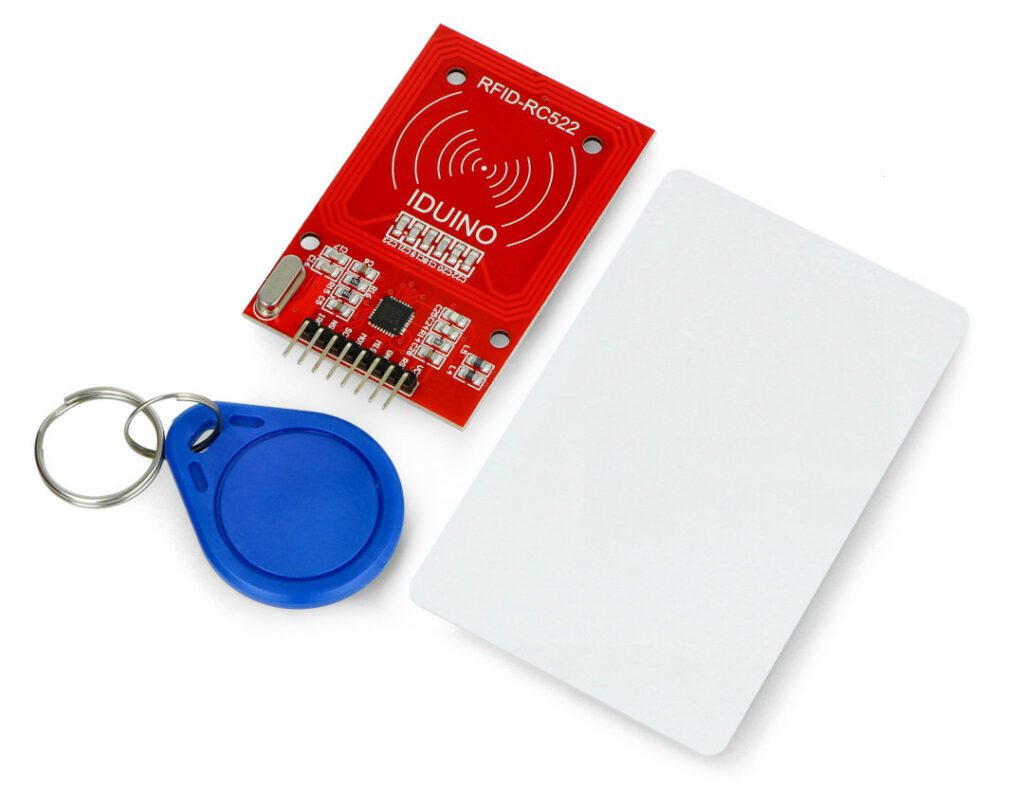Table of Contents:
Imagine a world where every object can tell its story, reveal its origin and convey valuable information without uttering a word.
This is not a scenario from a science fiction movie, but a reality created by RFID technology.
At the center of this fascinating universe is the RFID card reader – a small device with extremely practical capabilities.
Its ability to communicate with IDs without contact opens the door to countless applications that make life easier, increase security and speed up the flow of information.
Check out what you should know about the RFID card reader.
What is an RFID card reader?
RFID card reader is an electronic device that plays a key role in radio frequency identification (RFID) technology.
Its main function is to read (and sometimes write) contactless data stored on RFID cards.
These devices communicate with tags using radio waves, which allows information to be exchanged at a distance, without the need for direct visibility or physical contact between the reader and the tag.
As a result, RFID readers are widely used in many industries and applications, from access control to supply chain management.
How does the RFID card reader work?
Principle of operation RFID card readers is based on the generation of an electromagnetic field that activates the tag, allowing it to send the information stored on it back to the reader.
This process takes place in a fraction of a second and can be carried out from different distances, depending on the power of the reader and the type of RFID tag.
The card readers can be stationary or portable, allowing for flexible use in a variety of conditions and operating environments.
How is an RFID reader built?
The design of the RFID card reader is based on several key components.
The first is the RF (radio frequency) module, which is responsible for generating radio signals and receiving responses from tags.
The reader also includes an antenna, whose task is to emit and receive radio waves.
Depending on the requirements of the application, antennas can be of different sizes and shapes to optimize the range and effectiveness of communication.
An important part is also a microcontroller that manages the device’s operations, including the encoding and decoding of information sent between the reader and the tag.
Finally, the reader comes with software that allows interpretation of the data read from the tags and integration with other systems, such as access control or asset management systems.
With these components, the RFID reader is able to communicate with tags quickly and efficiently.
What are the most important advantages of RFID readers?
RFID technology has gained popularity in a variety of applications for good reason.
Here are some of the key benefits of card readers:
- Contactless reading of data – RFID readers enable contactless scanning of cards, providing fast and convenient access to information without the need for physical touch or precise orientation of the device.
This makes the technology ideal for environments where speed and convenience are a priority. - Readability through obstacles – unlike, for example, barcodes, RFID tags can be read even when they are hidden or obscured, such as inside a package.
This significantly increases efficiency in inventory management and logistics, where it is possible to quickly read multiple items at once without having to remove them individually. - Resistance to harsh conditions – RFID cards are designed to withstand demanding conditions such as moisture, dirt, high or low temperatures.
This means that the RFID reader can be used effectively in a wide variety of environments – from freezing cold warehouses to hot industrial production halls. - High security – RFID technology enables advanced encryption and authentication methods, which increases the security of transmitted data.
This is especially important in applications where protecting information is crucial, as in access control systems.
What can an RFID card reader be used for?
RFID card readers are used in a wide variety of fields, offering a wide range of capabilities:
1. access control
RFID readers are widely used in access control systems, allowing quick and secure entry into buildings, rooms or restricted areas.
Examples include access cards used by employees to enter offices or specially secured areas in industrial facilities.
2. time management
In companies, an RFID card reader can be used to monitor employees’ working time, automating the processes of recording arrivals and departures from the office.
This is more convenient than traditional timekeeping methods, and minimizes the risk of errors.
3. resource management and inventory
In sectors such as healthcare and libraries, RFID readers can be used to monitor the location of important assets, such as medical equipment or books, making them easier to manage.
4. hobby electronic projects
For DIY enthusiasts and electronics lovers, the RFID card reader offers exciting opportunities to create custom projects such as smart door locks, pet identification systems or personalized alarm systems.
Hobbyists can experiment with RFID technology to create custom solutions tailored to their own needs and interests.
Does RFID technology have any drawbacks?
Finally, it is worth mentioning that the technology RFID also has some limitations.
These include, among others.
data security issues, as unprotected tags may be susceptible to unauthorized reading or cloning.
In addition, RFID card readers can be sensitive to radio signal interference, which can affect read reliability.
Despite these challenges, the potential and advantages of RFID technology mean that it continues to be widely used and developed.
How useful was this post?
Click on a star to rate it!
Average rating 5 / 5. Vote count: 1
No votes so far! Be the first to rate this post.




















